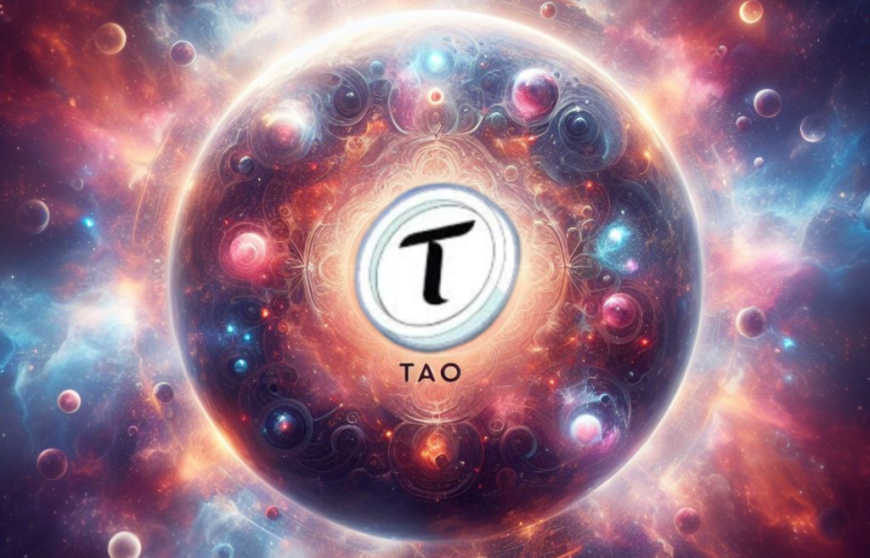Incentivizing Intelligence: A Comprehensive Overview of the BitTensor Protocol
In the rapidly advancing field of artificial intelligence (AI), one of the most pressing challenges we face today is ensuring that machine intelligence evolves efficiently and fairly. BitTensor, a decentralized peer-to-peer machine learning protocol, seeks to address this by incentivizing intelligence.

The BitTensor protocol allows neural networks to exchange knowledge and be ranked for their contributions by their peers. This article explores how this protocol works and why it's revolutionizing the AI landscape.
The Problems with Traditional Machine Intelligence
Machine intelligence today is plagued by two significant issues that limit its growth and impact:
-
Loss of Model Intelligence: The knowledge produced by machine learning models is often lost once new models are created. Although AI research advances every year, introducing incremental improvements on older work, the actual models used to produce these results are typically discarded. This practice forces researchers to continually start from scratch, retraining models and losing the valuable intelligence that was already gained. As a result, the field of machine learning is stuck in a loop of redundant work rather than building on the knowledge already acquired.
-
Model Evaluation Bias: The current model evaluation system is highly prone to bias. It is notoriously difficult to replicate AI results, and the peer review process is subject to human bias. These biases make it challenging to identify truly impactful models. A more efficient solution would be for AI models to evaluate one another, eliminating human intervention and creating a more transparent and fair system. This approach would reward only well-performing models that contribute meaningfully to the collective knowledge.
The BitTensor Solution
BitTensor is designed to solve these problems. It is a decentralized peer-to-peer machine learning protocol that allows AI models (referred to as "neurons") to interact with and evaluate each other. These neurons are ranked based on the quality of their contributions to the network, incentivizing intelligence and ensuring that the most impactful models receive appropriate rewards.
The BitTensor protocol operates across two layers:
-
The AI Layer: Each node, or neuron, in the BitTensor network is a computational node with a neural network trained on specific tasks. Unlike traditional AI neurons, BitTensor neurons use gRPC (Google Remote Procedure Call) to communicate with each other and exchange insights. This unique architecture allows the network to grow smarter as neurons share their learned knowledge.
-
The Blockchain Layer: The blockchain layer provides a decentralized infrastructure that governs the interactions between neurons. It enforces rules around consensus, rewards, and evaluation, ensuring that the system remains robust, secure, and free from collusion or bias.

How BitTensor Works: A Step-by-Step Overview
To understand how BitTensor incentivizes intelligence, let’s walk through the process using a text-based neural network (e.g., GPT) as an example.
-
Identifying Peers: First, a client with a neural network communicates with the blockchain layer to identify a list of high-ranking peers. These peers are selected based on their ranking within the network, ensuring that the client interacts with the best-performing models.
-
Sending Input Data for Evaluation: The client selects peers based on their specialties, such as text, image, or audio processing. In this case, if the client’s model is working with text data, it selects peers specializing in text processing and sends them a batch of data for evaluation.
-
Peer Responses: Peers process the input data using their own neural networks and return their outputs to the client. Peers that fail to provide useful responses are excluded from future interactions, ensuring only high-quality participants remain in the network.
-
Aggregating and Training: The client aggregates the responses from its peers and uses this information to train its own neural network. This collaborative learning system allows the client to benefit from the knowledge gained by other models in the network, accelerating its learning process.
The Role of Validation in BitTensor
In any decentralized system, validation is crucial to prevent malicious actors from exploiting the network. BitTensor’s validation mechanism ensures that only genuine machine learning models are rewarded. Validators, which are machine learning-based in this protocol, rank servers based on the quality of their outputs. If a server attempts to spam the network with low-quality or nonsensical data, validators penalize it by lowering its rank and reducing its rewards.
Incentivizing Intelligence via Blockchain
The blockchain layer plays an essential role in incentivizing intelligence on the BitTensor network. Peers that perform well receive rewards, while poor performers or malicious actors are penalized. Consensus is reached when more than 50% of the staked peers rank a neuron positively. This decentralized consensus ensures that the network remains robust and that only valuable contributions are rewarded.
Additionally, the protocol addresses the issue of collusion, where dishonest actors could attempt to rank each other highly to monopolize rewards. The consensus mechanism weighs the input of honest peers against dishonest ones, ensuring that only those contributing to the network in a meaningful way receive the majority of incentives.
The Current State of BitTensor
Since its launch in November 2021, the BitTensor network has capped the number of participating peers at 4096. However, this cap is dynamic, meaning that new high-performing models can replace underperforming peers. Most of the current peers on the network run generative language models, and the network manages an estimated 500 billion decentralized parameters. Each node is queryable, inferable, and trainable, allowing users to benefit from the collective intelligence of the network.
How to Get Started with BitTensor
If you’re interested in exploring the BitTensor network, getting started is simple. You can install BitTensor directly via pip, and all the information you need is available on the project’s GitHub repository. Whether you’re a developer or a researcher, BitTensor offers a groundbreaking opportunity to contribute to and benefit from decentralized intelligence.
Conclusion
BitTensor is revolutionizing the way machine intelligence evolves by creating a decentralized system that incentivizes meaningful contributions. By addressing the current challenges of model intelligence loss and evaluation bias, BitTensor paves the way for a more efficient, fair, and collaborative AI ecosystem. As more participants join and contribute to the network, the collective intelligence of the BitTensor protocol will continue to grow, making it a powerful force in the future of AI.
For more information and to explore BitTensor, feel free to visit the official website or GitHub page.
Source : @The Bittensor Hub.
















